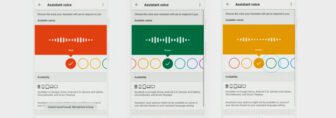What Is Qualitative Analysis? – Everything You Need To Know

While doing your research project, you might have come across the term “qualitative analysis”. You can see this in your question booklet. You need to explain the methodology and data analysis structure used in your research. If you do not know what this means, you have clicked on the correct link.
Qualitative analysis refers to the study of qualitative data to support your arguments and hypotheses in your research paper. In addition, this analysis method gets used to study and form connections between the research topic and other non-numerical data. Read on to find out more about it in this article.
What Is Qualitative Data?
Before we try to understand it, we need to know qualitative data. It is a type of data that is in written form. Therefore, we can say that it’s written. For example, if someone says that the color of the sun is orange, it is qualitative.
The primary purpose of qualitative data is to present a phenomenon in a form that characterizes it. Instead of measuring certain aspects of the phenomenon, it tries to explain it in a way that you understand its concepts and facts.
Examples of qualitative data include observations of an event, open-ended interviews, focus group discussions, and more.
What Is Qualitative Analysis?
Now that you know what is qualitative data, it is time to understand how its analysis works. Analysis refers to studying something in great detail to come to a specific conclusion that proves your hypothesis. Therefore, qualitative analysis is the study of qualitative data. You can link aspects of the data and form a judgment.
How To Collect Qualitative Data?
You can collect qualitative data for your research by using the following methods:
1. One-On-One Interviews
Interviews between two people are a great way to collect qualitative data. This approach gets preferred by most researchers and is also the most commonly used because of the personal touch participants add to the data.
When you conduct interviews, the answers you get from the other person get spoken, making them describe a particular topic in detail. Thus, less numerical data gets expected from such responses.
2. Group Discussions
Group discussions are similar to interviews because everyone asks each other questions. It’s like an interview, except it’s between multiple people at once. Like interviews, the participants describe the topic in detail, which may or may not include the presentation of numerical data.
3. Case Studies
Case studies refer to researching a particular event with great detail. For example, you can study the 2011 Tohuku Earthquake and Tsunami that hit Tokyo by reading about articles on the internet that Japanese people publish. You can find qualitative links between several published research articles and form your different hypotheses about the event from it.
4. Observation
While not as popular as other forms of data collection, observing an event by witnessing it live is often the best way to collect qualitative data. Here, you can, for example, watch a movie and write your review.
Various aspects of the movie, like the actors’ performance, the cinematography, directing, editing, and music, are all known as qualitative data. It lets you analyze data to create your review or research.
5. Longitudinal Studies
Longitudinal studies refer to collecting data by observing various traits of an event for many years or even decades. For example, geologists observe tectonic plate shifts of a region and its climate for years before predicting future earthquakes and climate changes.
6. Record Keeping
Like case studies, record keeping refers to reading previously published works on a topic from the internet or the library to find relevant qualitative data.
Types Of Qualitative Data Analysis
There exist six types of qualitative analysis, which are:
1. Ethnographic Analysis
Ethnographic analysis is based on studying topics or phenomena entirely unknown to you. This may include watching a movie for the first time, where there are actors and directors about whom you have never heard about. This way, you can gain data that you cannot make any previous connections to similar phenomena. This is useful for analyzing foreign cultures and religion by becoming a part of it temporarily.
2. Phenomenological Analysis
Phenomenological analysis refers to studying the experiences of other people and understanding them yourself. Also known as lived experiences, the study subjects like the respondents of an interview or group discussions take place to narrate their experience with particular phenomena. This provides first-hand data about an event or topic.
3. Grounded Analysis
This is the most common form of data analysis, mainly used for research projects by university students. Here, the student comes up with a theory or hypothesis grounded or based on the data collected. After the data is analyzed, the researcher can prove their hypothesis by analyzing the available information.
4. Historical Analysis
This refers to forming your analysis based on past experiences or past research. For example, you can make marketing strategies based on customers’ actions as they react to various advertisements and products. This way, you can gain knowledge about the traits of the customer base, on which you can create new marketing strategies to influence them to buy your products.
5. Case Study Analysis
As the name suggests, case study analysis is an analysis of case studies on a particular person or group. So, for example, you can conduct a case study on a specific company like Nokia and analyze their marketing strategies to determine how they changed over a certain period.
6. Action Research Analysis
Action research means experimenting. Here, you can conduct social experiments with people and analyze their reactions. This provides first-hand data about a phenomenon instead of relying on data provided by others.
Qualitative Analysis VS Quantitative Analysis
Now you must be wondering what the difference between quantitative and qualitative analysis is? The answer lies in their names. Quantitative analysis refers to studying numerical data in graphs and charts. On the other hand, qualitative data refers to non-numeric data that you can attain through extensive study of a particular topic.
For example, respondents can take surveys to answer close-ended questions. You can create a graph detailing how many respondents replied Yes or No to a question based on their answers. This gives you a general idea of the experience of the respondents.
On the other hand, qualitative analysis can include taking open-ended interviews of respondents and understanding their in-depth knowledge and experience with a topic.
Qualitative Analysis Software
There exists much qualitative analysis software like:
1. NVivo
This application allows the organization of research materials like spreadsheets, online surveys, web data, and written literature in one place. Therefore, NVivo saves your time by efficiently storing and organizing your data. We recommend this if you conduct a mixed research analysis.
2. ATLAS.ti
ATLAS.ti is one of the best qualitative analysis software on the market. It lets you work with many data sources like memos and documents simultaneously. Moreover, it’s Unicode throughout, allowing you to analyze multiple documents simultaneously.
3. Provalis Research Text Analysis Software
This analysis software lets you be best suited for mixed data analysis since it can analyze quantitative and qualitative data simultaneously with great precision. Moreover, it can also present the analyzed data in both forms.
4. Quirko
This software has one of the best user interfaces we have ever seen in data analysis software. Each piece of the data is visualized with great detail, allowing you to navigate them easily. As a bonus, you can also run qualitative risk analysis using this software.
Frequently Asked Questions:
The three main approaches towards qualitative analysis are:
• Ethnography (based on anthropology)
• Phenomenology (based on philosophy)
• Grounded Theory (based on sociology)
There are primarily six types of designs of qualitative analysis. They are:
• Ethnographic analysis
• Phenomenological analysis
• Grounded analysis
• Historical analysis
• Case Study analysis
• Action research analysis
Quantitative analysis refers to the study of numerical and measurable data like close-ended answers from a survey. On the other hand, qualitative analysis studies non-measurable data like open-ended answers from an interview.
Quantitative analysis is the study of data of a particular topic that is numbered and measurable. Ann example of quantitative data is a survey where people answer close-ended MCQ-style questions.
Conclusion
Qualitative analysis is one of the best forms of research analysis that you can conduct by yourself right now. All you need to do is gather good data sources or conduct interviews and group discussions to make a solid research article. Qualitative data analysis often provides you with insight that is not provided by quantitative analysis.
If you want to know more about the various forms of research, drop a like and view our other articles as well!
More Resources:


























